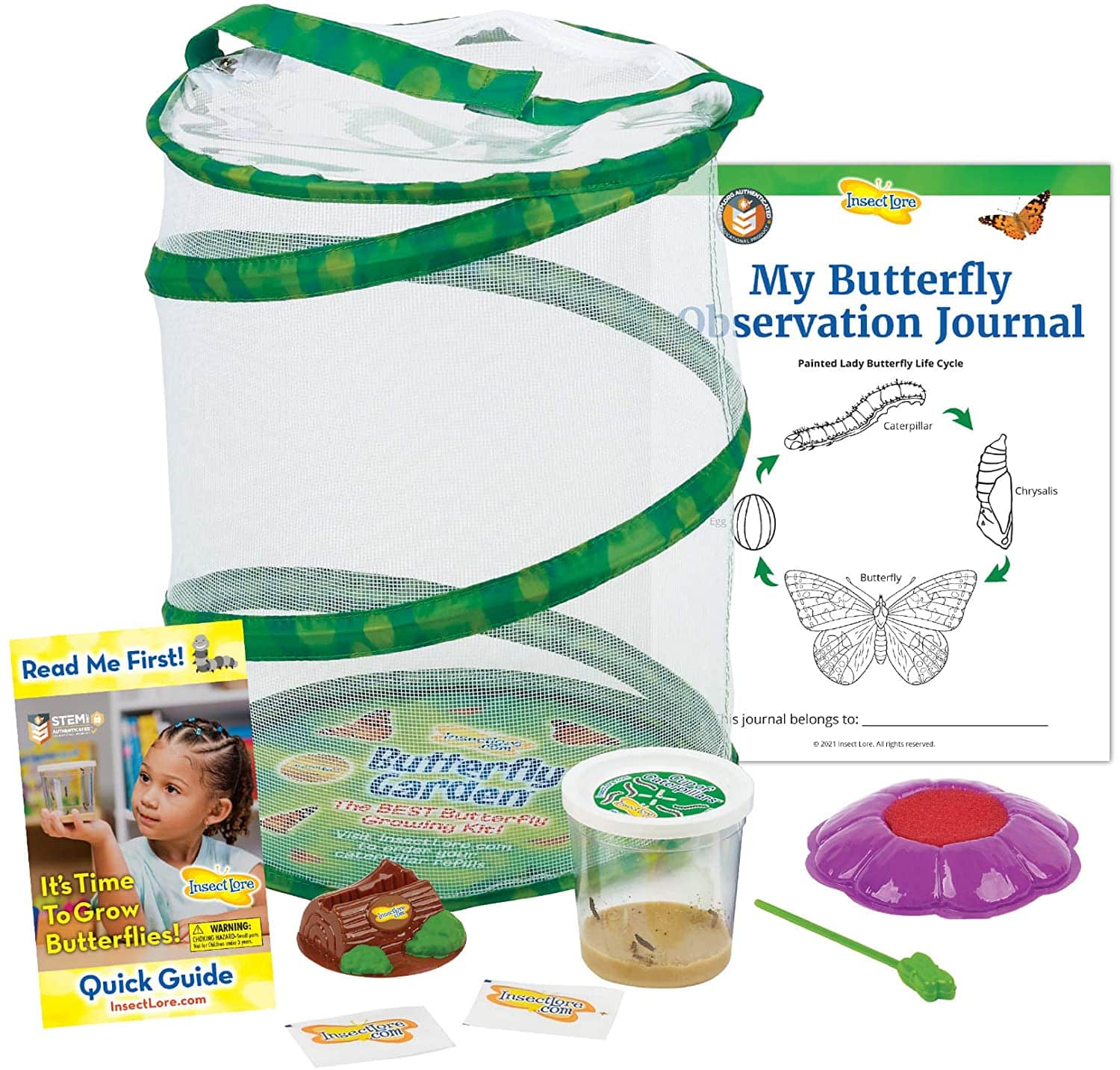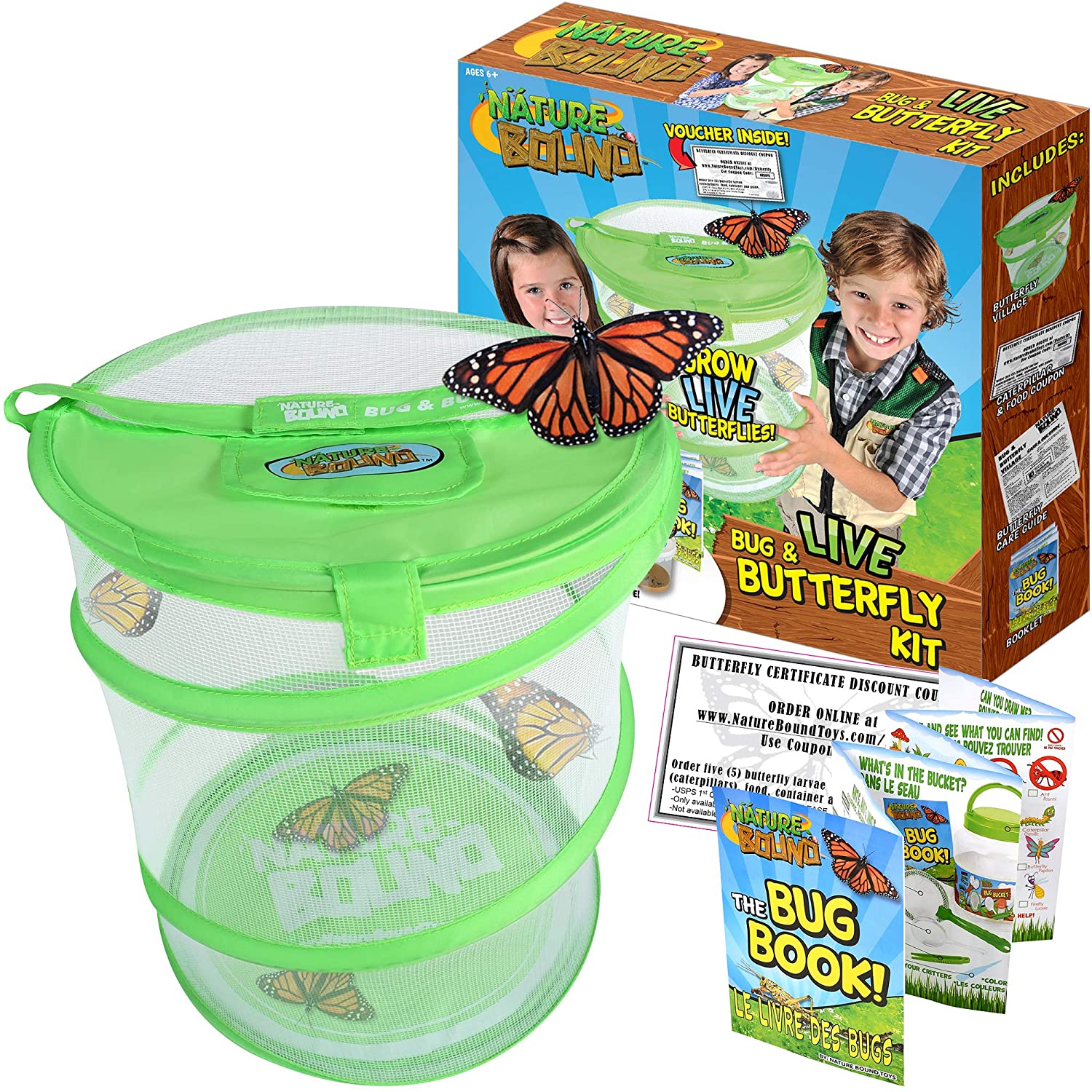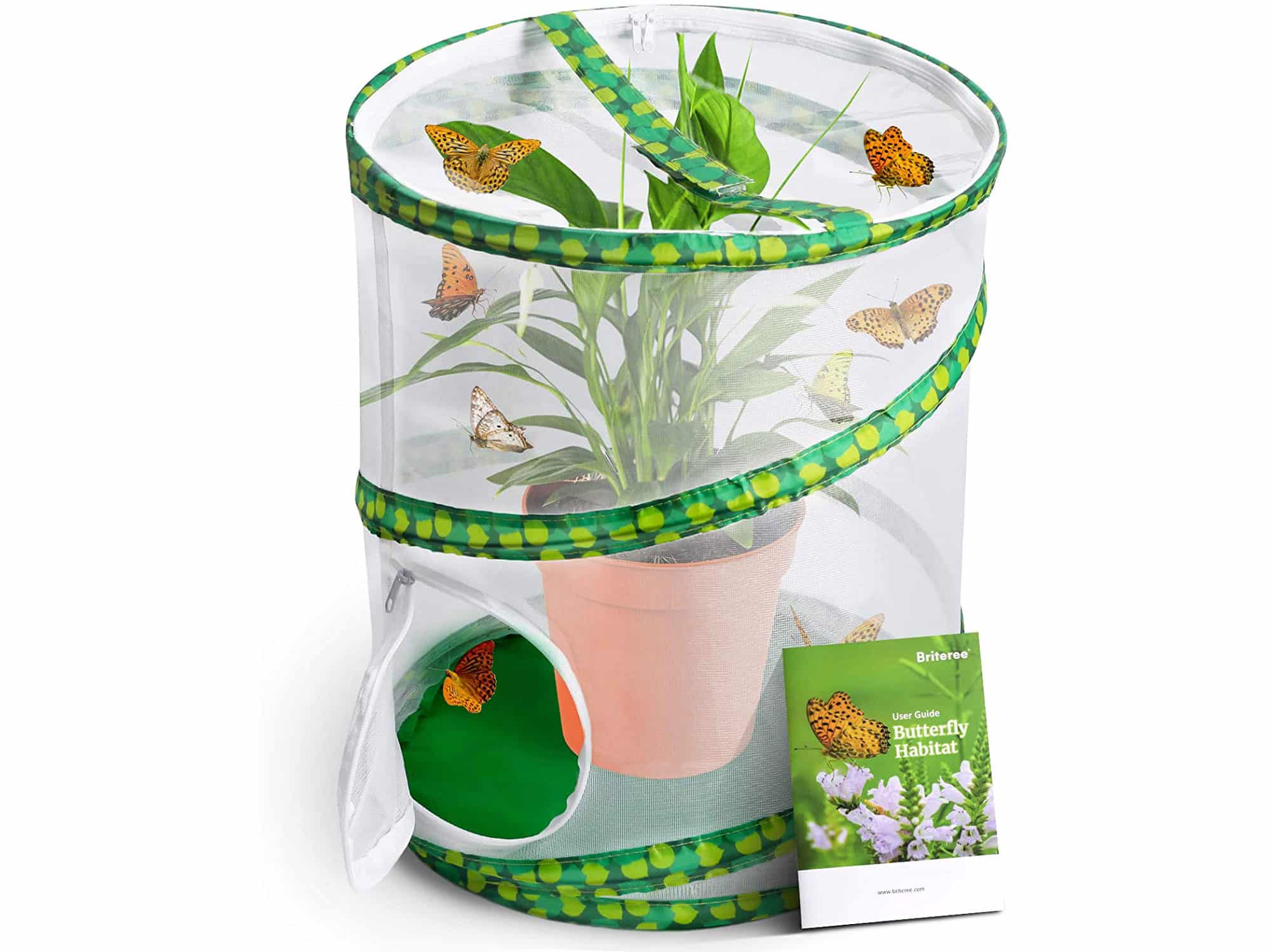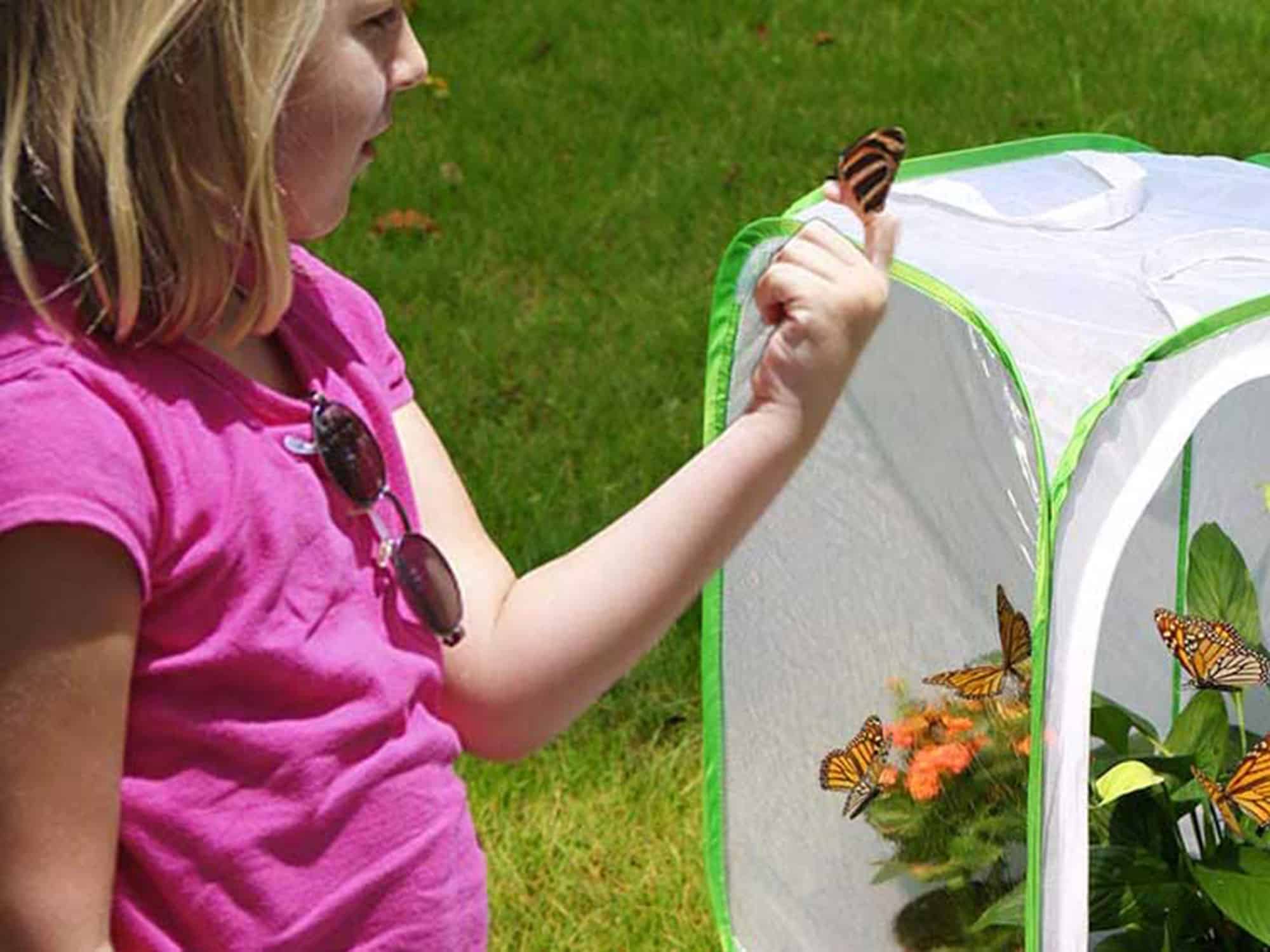Best Butterfly Habitats For Families In 2022
Engage your child's imagination and exploration skills with these at-home kits
We may receive a commission on purchases made from links.
Butterflies are one of our favorite wonders. Their transformation from portly caterpillar to graceful butterfly is one of nature's little miracles. Watching it never loses its magic. Butterflies help pollinate our ecosystem. But mostly they're lovely to observe, with their colorful wings and carefree flight.
Why not get the whole family involved in nurturing a butterfly habitat? No one is immune to the thrill of the metamorphosis. A STEM activity, butterfly habitats are a great way to teach sensitivity toward nature, the environment, and bring the outdoors inside. But don't tell your kids that's what you're doing. All they need to know is they're having a fascinating time.
Our selection of butterfly habitats ranges from the basic to the elaborate. Choose one that suits your household and lets your children's imaginations fly.

This top pick from Insect Lore provides everything you need from start to finish and then some. The pop-up habitat comes with five baby caterpillars destined to become painted lady butterflies. A nice extra is the STEM journal where your little scientist can document all the day-to-day progress. It's also full of writing, learning, and coloring activities for the in-between time. Fun fact: not only can butterflies see the colors we see, but they discern a wide range of ultraviolet colors invisible to the human eye. Flowers also display ultraviolet markings that attract pollinators like the butterfly. It is thought butterflies themselves might have ultraviolet markings on their wings to help them find and identify each other, too.

This 12-inch cylindrical habitat collapses for easy storage, and is suitable for other flying insects, too. There's an activity book to engage your children's creativity, and a 50 percent off voucher to order live caterpillars and food whenever you're ready to begin your project. Or you can take your kids on a trek outdoors to find caterpillars and insects from your own backyard to supply the habitat. In Spanish, the butterfly is known as the mariposa. Another interesting fact: There is a subspecies called night butterflies who have tiny ears on their wings to warn them of approaching bats. The largest butterfly of all is the colorful female Queen Alexandra of Papua, New Guinea, aptly named for her premiere status. She has a wingspan almost a foot wide, which is 10 times the size of a typical butterfly.

To give your child the thrill of growing botanicals without the sensitivity of spawning live butterflies, this choice offers a great alternative. The plastic mason jar has pre-punched air holes in its lid and comes with plenty of sparkly craft supplies and butterfly decorations to embellish the jar inside and out. Bring out their inner artist and botanist at the same time with this activity. Did you know butterflies taste with their feet? Since they land on flowers, their feet have tiny taste receptors that guide them to the nectar. And not surprisingly, they don't like the cold. Low temperatures can render them immobile. When they first hatch from eggs and begin their quest to become a caterpillar, they will increase their body size by an incredible 30,000 times. They remain a caterpillar for 2-4 weeks before closing up shop in the chrysalis to await their final transformation.

When all you need is a butterfly habitat and some instructions, this Briteree product does the job well. It's 14 inches high and 12 inches wide, and the transparent PVC roof gives young observers an excellent view of the activities. It's smartly designed with two zippers for convenient access – one on the roof to lower in plants or other objects, and one on the side for quick and easy feeding or cleanup. It seems a bit sad these beautiful creatures only live for a few weeks, although there are some exceptions. Not all butterfly species migrate, but the amazing monarch has been known to live for up to 11 months and migrate as far as 3,000 miles south. Monarchs in the eastern US typically winter in the Sierra Madre mountains of Mexico, while monarchs from the northwestern region of the US winter in California near Santa Cruz or San Diego. We think these delicate creatures are onto something there.
Kelli Brandenberger is a contributing writer to Islands, an award-winning brand founded in 1980 that speaks to international travelers who have an affinity for the Caribbean and beyond. The website showcases destinations, resorts, cruises, and recommendations by the Islands' staff. Kelli is a writer and editor who spends as much time as possible near the water. Her favorite Caribbean destinations are found in Roatan, the US and British Virgin Islands, and secluded mountain resorts of the Pitons in St. Lucia.
